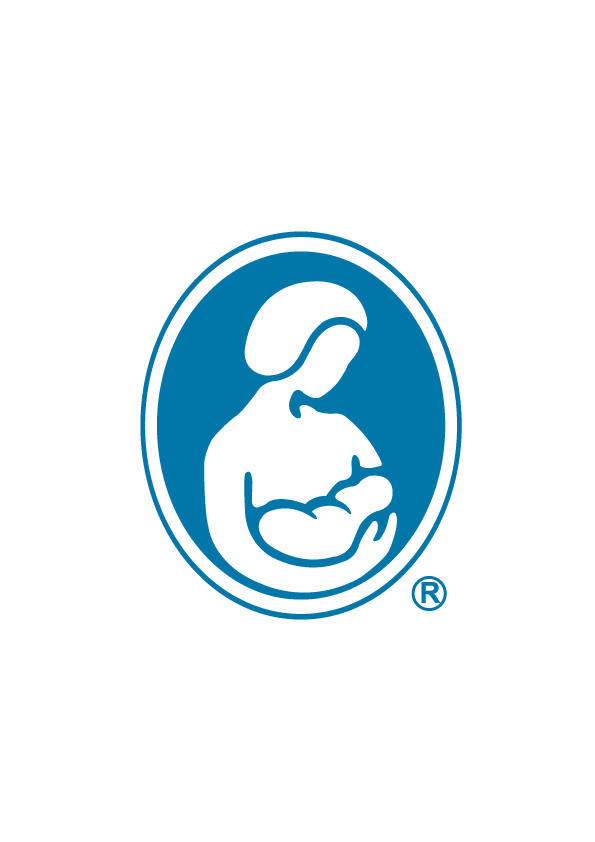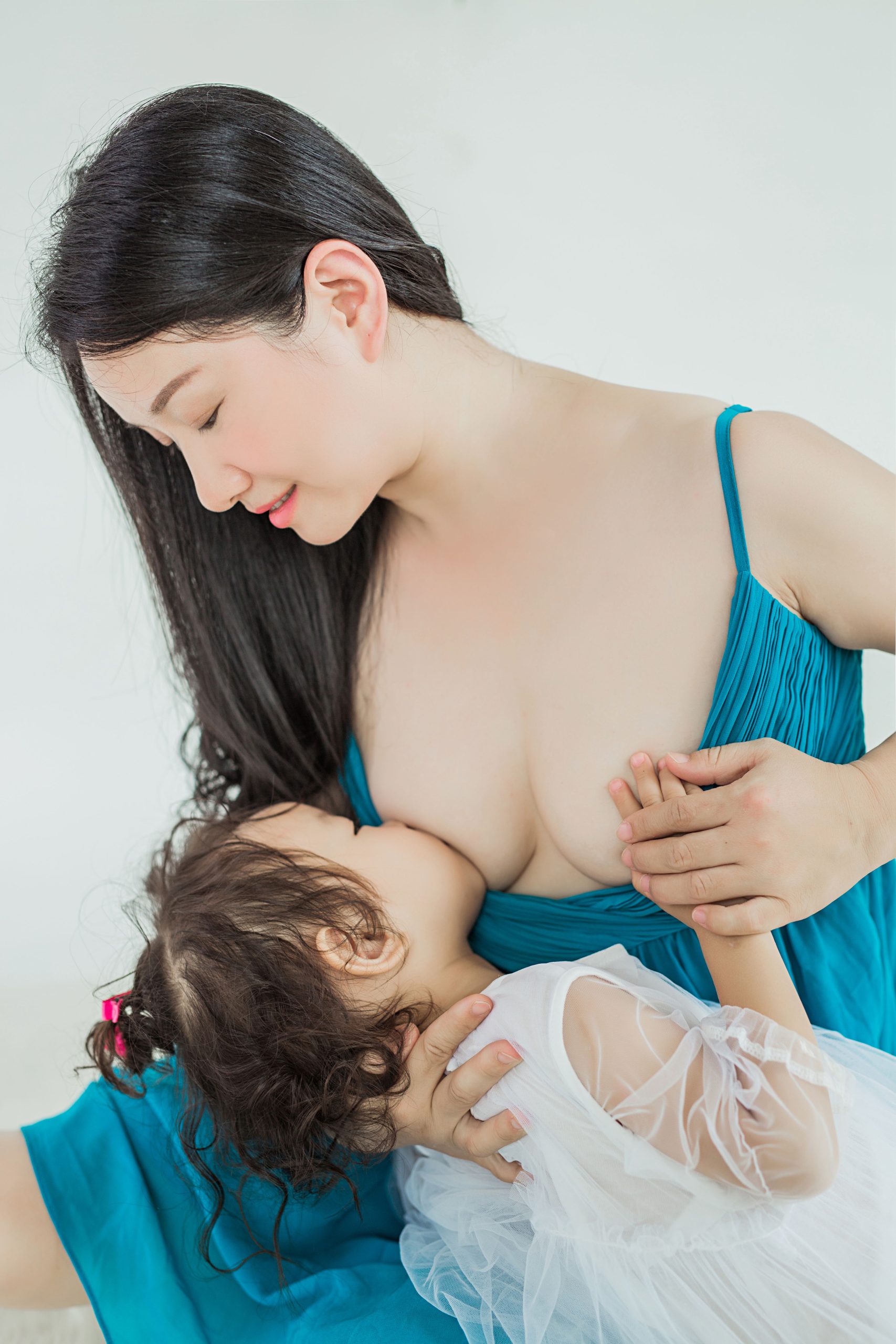In modern times, we have gained more knowledge about how breastfeeding works and how to avoid common difficulties, but on the other hand breastfeeding is no longer the norm in many societies, which has thrown up new obstacles. If breastfeeding isn’t the norm where you live, what can you do to help normalise it?
当今时代,我们已经了解了很多关于母乳喂养的机制、如何预防常见困难的信息,但是另一方面,母乳喂养在许多社会中不再是一种常见的现象,这给母乳喂养形成了新的障碍。如果母乳喂养在你的生活环境中并非常态,你如何做能够使之常态化呢?
China and Hong Kong in the 1940s and 1950s
Cheng Li Shuk Kam (now aged 94):
中国和香港,20世纪40年代和50年代
程李淑琴(现94岁):
It was 1944 when my first son was born. Our family of over 20 people lived in a large house within a town in Guangdong Province. I breastfed my son immediately after he was born. Four months later, my sister-in-law had some trouble breastfeeding her third son. In those days, we believed that she didn’t have enough milk. We didn’t know about supply and demand. She asked me if I could breastfeed him, and I didn’t think it was a strange or unusual request because we were family. I simultaneously breastfed my son and my nephew for two years. My nephew moved from our village to Hong Kong at the age of two, and I continued to nurse my son for another one and a half years, until he turned three and a half.
1944年我生了第一个儿子。我们家族20多个人,住在广东省一个镇的大房子里。儿子出生后,我马上就开始给他喂奶。四个月后,我嫂子给她第三个儿子喂奶时遇到了些麻烦。那时候我们都认为她的奶少。我们不了解供需原理。当她问我能不能给她儿子喂奶时,我没有认为这是什么古怪或异常的要求,因为我们是一家人嘛。所以我同时给儿子和侄子喂了两年奶。在侄子两岁时,他们一家从我们村移居到了香港。而我继续给儿子又喂了一年半奶,直到他三岁半大。
In those days, mothers would breastfeed children for four to five years; three and a half years was considered a very short length of time to nurse a child.
那个年代,妈妈们给孩子喂四到五年的奶,三年半是被认为喂奶时间非常短的了。
Just two months after the birth of my second son, another sister-in-law of mine had her fifth daughter. She had a lot of difficulty breastfeeding and asked me if I could also nurse her daughter for her. We all believed that she was unable to breastfeed because of her age. She was over 40 and we all mistakenly thought that she wasn’t able to produce any milk. Again, I agreed to help her nurse her daughter, and I was also asked to be my niece’s godmother. I nursed her until she was two.
就在我第二个儿子出生两个月以后,另外一个嫂子的第五个女儿出生了。她喂奶也遇到很多困难,问我是否可以替她给她的女儿喂奶。我们都认为是因为她年纪大了所以无法喂奶。她已经40多岁了,我们都错误地认为她已经不会有什么奶了。又一次,我同意来帮助她喂养她的女儿,同时我被要求成为这个侄女的干妈。我给她喂奶到两岁大。
Simultaneously breastfeeding two babies was never difficult, nor did it ever feel like a burden; I was always proud to be such an integral part of their growth.
同时给两个孩子喂奶一点都不困难,也从没让我觉得有负担;能够融入他们的成长过程,我非常骄傲。
In those days, if a woman had a low milk supply, mothers would feed their infants water from which rice was boiled in, otherwise known as congee water or rice water. If the family was wealthy, mothers would feed their children canned milk diluted with water. But for most families, breastfeeding was essential to survival.
那个年代,如果女人产奶少,母亲会给孩子喂米汤。如果家庭富裕,母亲会将罐装牛奶加水稀释后喂给孩子喝。但是对于多数家庭来说,母乳是孩子生存必不可少的。
We had already moved to Hong Kong by the time my third son was born. He was breastfed for only two years because our doctor said it wasn’t good to breastfeed for too long. He said that as my child grew older, the milk that my body was producing had no nutrition left in it. This was probably because there were many new baby formulas being introduced into the market and breastfeeding was no longer the only option. Formula feeding was quickly becoming more widely accepted. I would have continued breastfeeding my son but I believed the doctor’s“expertise” and advice and weaned him at the age of two.
在第三个儿子出生时,我们家已经移居到香港。他只吃了两年母乳,因为医生说母乳喂养时间太长不好。他说随着孩子长大,母乳里就慢慢没有营养了。这可能是因为许多新的奶粉品牌涌入市场,母乳喂养不再是唯一选项。奶粉很快被大众接受了。我本可以继续喂奶,但是我错信了医生的“专业”意见,在他两岁时就断了奶。
Japan and the USA, 1960s to 1980s
RuthAnna Mather:
日本和美国,20世纪60年代至80年代
露丝•安娜•马瑟:
I grew up in Hokkaido, Japan, during a time when breastfeeding was a part of life in most of Japan, including in larger cities. Mothers nursed their children in public without embarrassment, for nourishment and for comfort. Mothers carried their babies and young children on their backs and took them wherever they went. Although hospital births and formula feeding was slowly increasing, it was not yet commonplace throughout Japan.
我出生于日本北海道,那时候母乳喂养是大多数日本人生活的一部分,包括大城市的人。母亲在公共场合喂奶无需羞怯,喂奶可以给孩子带来营养和舒适。母亲不管去哪里都背着他们的宝宝。尽管在医院分娩和奶粉喂养的现象逐渐增多,但没到非常普遍的程度。
As I became a young adult and started thinking about marriage and having children, my dream was to have at least five children and to breastfeed. When I went to college in the USA and mentioned this to my friends there, they were horrified. I was very surprised at their reaction. I found out that they had grown up at a time in the USA when breastfeeding was not a normal part of everyday life and mothers did not take their babies everywhere with them. In fact, mothers were encouraged to formula-feed by doctors, to not hold their babies too much lest they become too dependent, and to leave their babies and young children in nurseries and with babysitters so that they would not feel tied down. I realised then that I was very fortunate to have grown up in a culture where breastfeeding was the norm.
在我刚刚成年,开始考虑结婚生孩子的时候,我希望至少生五个孩子并且用母乳喂养他们。后来我去了美国上大学,把我这个想法告诉了朋友们,她们都吓到了。我对她们的反应非常惊讶。我发现在她们成长的时期中,在美国,母乳喂养已经不再是日常生活的组成部分,母亲出行也不会随时带着孩子。实际上,医生鼓励母亲用奶粉喂养孩子,并且鼓励母亲少抱孩子,否则孩子无法独立,他们也鼓励母亲把婴幼儿留在托儿所里,由保姆照顾,这样母亲们就不受约束了。所以我意识到,我能够在母乳喂养是常态的文化中成长是多么幸运。
Western countries in the 1950s
西方国家,20世纪50年代
The situation in Western countries highlights a trend which started in the USA and was soon to hit Asia.
始于美国,流行于一些西方国家的喂养潮流很快将侵袭亚洲
This was the era when formula milk became king. Huge improvements in hygiene meant that bottled milk for babies was much safer than before in economically developed countries, and parents trusted their doctors’ advice that formula was better for their babies than breastfeeding.
In 1956, a time which could be regarded as the lowest point in breastfeeding history, La Leche League was founded by seven women who saw the huge need for better breastfeeding support. One of the founders, Mary Ann Kerwin, observed:“In 1956, breastfeeding was a lost and dying art. I believe that never before in the history of the world had a resource as valuable as human milk been so widely discarded.”
这是个奶粉称王的年代。在经济发达国家,随着卫生条件的改善,奶瓶喂养对婴儿来说比以前更为安全,于是父母相信医生的建议,认为奶粉比母乳对宝宝更好。1956年,被认为母乳喂养历史中最为艰难的那一年,七位女士看到了母乳喂养的母亲们急需支持,于是成立了母乳会。其中的一位创始人,玛丽•安•科文说道:“1956年,母乳喂养是一门被遗忘、即将消失的艺术。我相信世界历史上,以前从未有过放弃母乳这种珍贵资源的情形发生。”
At that time, 80% of US mothers were using infant formula, which became a trend in developing countries as more mothers abandoned breastfeeding.
那个年代,80%的美国母亲使用奶粉喂养,并且这种潮流开始扩展到发展中国家,越来越多的母亲放弃母乳喂养。
Mongolia in the mid‐2000s
蒙古,21世纪初期
Ruth Kamnitzer:
露丝•卡姆尼泽
In Mongolia, there‘‘s an often-quoted saying that the best wrestlers are breastfed for at least six years – a serious endorsement in a country where wrestling is the national sport.
蒙古有一句俗语,最好的摔跤手至少吃了六年母乳——在这个摔跤被称为国技的国家,这句话是对母乳喂养最郑重的认可。
Raising my son during those early years in a place where attitudes to breastfeeding are so dramatically different from prevailing norms in North America opened my eyes to an entirely different vision of how it all could be. Not only do Mongolians breastfeed for a long time, they do so with more enthusiasm and less inhibition than nearly anyone else I‘‘ve met. In Mongolia, breastmilk is not just for babies, it‘‘s not only about nutrition, and it‘‘s definitely not something you need to be discreet about. It‘‘s the stuff Genghis Khan was made of.
养育儿子的最初那些年,我是在一个母乳喂养态度完全不同于北美地区的地方,在那我看到了母乳喂养的真实所在。蒙古人不仅母乳喂养时间长,而且和我看到的其他地区的人相比,他们对此充满热情,而且很少有这方面的限制。在蒙古,母乳不仅仅是喂给婴儿,也不仅仅是给孩子提供营养,显然也不是需要谨小慎微对待的事物。她是成吉思汗国的组成部分。
When I breastfed in the park, grandmothers would regale me with tales of the dozen children they had fed. When I breastfed in the back of taxis, drivers would give me the thumbs-up in the rearview mirror and assure me that my son would grow up to be a great wrestler. When I walked through the market cradling my feeding son in my arms, vendors would make a space for me at their stalls and tell him to drink up. Instead of looking away, people would lean right in and kiss my son on the cheek. If he popped off in response to the attention and left my streaming breast completely exposed, not a beat was missed. No one stared, no one looked away – they just
laughed and wiped the milk off their noses.
我在公园喂奶时,前来打趣的姥姥奶奶们会讲他们养育一大堆孩子的故事。我在出租车后座上喂奶时,司机在后视镜中翘起大拇指,还向我保证我的儿子将来会成为一个伟大的摔跤手。我怀抱在吃奶的孩子穿过集市时,卖家会在他们的货摊中给我腾出坐的地方,还对我儿子说:“好好吃完奶吧!”人们看到我喂奶时,不是转移目光,而是靠近我,在我儿子脸颊上亲亲。如果孩子离开乳房回应这些来问候的人,让我喷奶的乳房就那么露在外面,这也无关紧要。没有人盯着露出的乳房看,没有人转移目光—他们只是抹着自己沾满奶水的鼻子大笑着。
From the time my son was four months old until he was three years old, wherever I went, I heard the same thing over and over again: “Breastfeeding is the best thing for your baby, the best thing for you.” The constant approval made me feel that I was doing something important that mattered to everyone – exactly the kind of public applause every new mother needs.
那时我儿子四个月大,一直到他三岁大,不管我到哪里,一遍又一遍听到的都是:“母乳对你宝宝是最好的,对你自己也是最好。”这些不断的确认让我相信我正在做一件事关所有人的大事——这正是每个新妈妈都需要的社会认可。
(馨妈 翻译 Daisy、Missy审稿)

